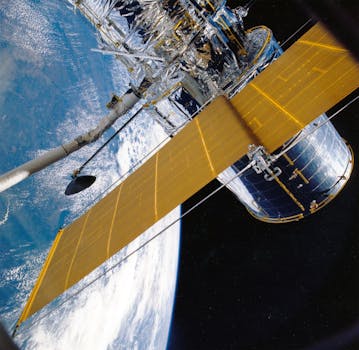Navigating the Skies: Insights into Recent Satellite Telecommunications Innovations

Navigating the Skies: Insights into Recent Satellite Telecommunications Innovations
Navigating the Skies: Insights into Recent Satellite Telecommunications Innovations have revolutionized the way we communicate and access information. The latest advancements in satellite technology have enabled faster, more reliable, and more secure connections, transforming the telecommunications industry. In this article, we will explore the recent innovations in satellite telecommunications and their impact on the industry.
Satellite telecommunications have come a long way since the launch of the first commercial communications satellite, Intelsat 1, in 1965. Today, satellites play a critical role in providing global connectivity, enabling communication services such as voice, data, and video transmission. The recent innovations in satellite technology have focused on improving the efficiency, capacity, and flexibility of satellite communications.
Recent Advancements in Satellite Technology
One of the significant recent advancements in satellite technology is the development of high-throughput satellites (HTS). HTS satellites are designed to provide higher bandwidth and faster data transfer rates, making them ideal for applications such as broadband internet, mobile networks, and video transmission. HTS satellites use multiple spot beams to reuse frequencies and increase capacity, allowing for more efficient use of bandwidth.
Another innovation in satellite technology is the use of advanced propulsion systems. Traditional satellite propulsion systems rely on chemical propulsion, which can be heavy and inefficient. New propulsion systems, such as electric propulsion and advanced ion engines, offer greater efficiency and maneuverability, enabling satellites to extend their mission lifetime and reduce their environmental impact.
The use of satellite constellations is another recent innovation in satellite telecommunications. Satellite constellations involve a network of satellites working together to provide global coverage and connectivity. Constellations can provide greater capacity, redundancy, and flexibility, making them ideal for applications such as global broadband, mobile networks, and Earth observation.
Impact of Satellite Telecommunications Innovations
The recent innovations in satellite telecommunications have had a significant impact on the industry. Satellite communications have become more efficient, reliable, and secure, enabling a wide range of applications and services. The use of HTS satellites, advanced propulsion systems, and satellite constellations has increased capacity, reduced costs, and improved performance.
Satellite telecommunications have also enabled greater connectivity and access to information, particularly in remote and underserved areas. Satellite-based broadband services have expanded internet access to millions of people around the world, bridging the digital divide and promoting economic development.
The innovations in satellite telecommunications have also driven growth and investment in the industry. The satellite industry has experienced significant growth in recent years, with investments in new satellite systems, launch services, and ground infrastructure. The industry is expected to continue growing, driven by demand for satellite-based services and the increasing adoption of satellite technology.
Challenges and Opportunities
Despite the many innovations and advancements in satellite telecommunications, there are still challenges to be addressed. One of the significant challenges is the increasing congestion in orbital slots and frequencies, which can lead to interference and reduced performance. The industry must develop new technologies and strategies to manage congestion and ensure sustainable use of orbital resources.
Another challenge is the growing concern about space debris and the environmental impact of satellite operations. The industry must develop sustainable practices and technologies to reduce waste, prevent collisions, and promote responsible satellite operations.
Despite these challenges, the future of satellite telecommunications is promising. The industry is expected to continue innovating and evolving, driven by advances in technology, growing demand for satellite-based services, and increasing investment in the sector. As satellite telecommunications continue to navigate the skies, they will play an increasingly important role in shaping the future of global connectivity and access to information.






